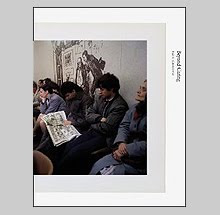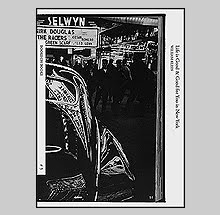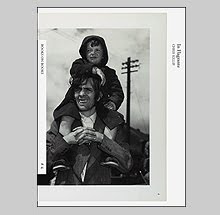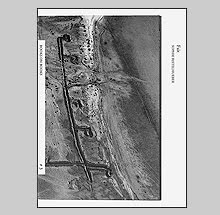School by Raimond Wouda

I have mentioned many times my fascination with photography is mainly due to those rare moments when a camera in the hands of a skilled practitioner can achieve the miraculous. That is, when a photograph contains so much information, reordered to perfection where every element within the frame keeps adding surprise and revelation. It does not happen often.
This is why I am so envious in some ways of painters because they can control each element or figure. Brueghel's dancing peasants, Ingres' Turkish bath, or Poussin's ordered chaos of The Rape of the Sabines deal with multiple human figures which all find their place within a deep space. Those paintings hold so much descriptive force that new discoveries upon repeated viewings are a part of their draw. For me, in photography, the image first must keep me engaged even after hundreds of viewings and this is why 'ideas' behind images are much less compelling when the execution of the work does not master the thought. This is one reason the work in schools and colleges of Raimond Wouda is so compelling to me.
Wouda started to observe the relationships among groups of teenagers while they were on the school playground across the street from his studio. Something about those observations drew him to approaching the institutions in order to gain access to their hallways and common areas with his view camera and strobes. It wasn't the classroom he was interested in but what was happening when the students were on their own and what that might reveal if photographed. His newest book School from Nazraeli published this year brings together a tight edit of 35 of these images.
School is often less about learning the classroom lessons but learning about your place in societal structures. Groups or cliques and those desires to be accepted often form confidence or devastate it. Finding your place was a form of recognizing something of yourself in others. Being in school was often about being obsessively aware of your body, each movement and what it might reveal about you. Clothing, hair and accessories merge into your identity within fads that have little to do with you as an individual. What is so amazing about Wouda's work is that with all of this self-awareness present in such an environment, he and his cumbersome view camera and strobes could somehow go about their tasks relatively unnoticed. Photographers do not tend to tread lightly.
His camera is the omniscient observer. The height, beyond normal human perspective, describes from above and allows for renderings of a deeper and more complex space. We do not experience just a foreground and background but a full field of view which is made more intense with the amount of characters he juggles. Massimo Vitali would be a natural comparison but for me his images are too wide angle and he treats the characters as minor players within the large expanse of landscape. Here Wouda gives equal treatment to both people and environment. There is no hierarchy but a complete merging of form between the two.
Like a painter, Wouda is able to choose moments within a chaotic environment where each element and character finds their own space in which to be described clearly. It is within these moments that small individual one-act plays are caught, cliques formed and individual personas perceived. An image of a school dance shows a clear divide of male and female while each group eyes the other with desire stifled by hesitancy to breech the divide alone.
My fascination with these images extends to the edges of the frame. Wouda's other strength is his ability to fill the frame even to the very edge and somehow the world cooperates to introduce more interesting elements. Page 17, a boy in a red shirt with an angled black stripe across his chest near the left side of the frame pauses against a slice of a brick wall while on the opposite right side a young woman in white looks left and a boy seated at a table nearby clasps his hands in front of him, elbow at the very frame edge and angled to mimic the black stripe of the boy on the opposite side. All of these small elements hold the tightness of the frame while in between a frieze of faces and gestures.
Add to the complexity, color. Once within the already difficult task of creating a new order from chaos, the introduction of color can either break or enhance compositions. A distracting color could grab attention from the rest of the frame destroying its integrity. The cover image of school was shot within a locker area - a space that Wouda works often. Within this image, reds become important signifiers of holding the frame together. The bottom left, a young woman's shirt starts a line of red shirts that continues to the back of the space, meanwhile the balance on the right side is achieved by a couple of flower ponytail holders and a last minute product placement of a Coke bottle sitting within a locker at the very frame edge. You could go on and on noticing the arrangements of blues, yellows and blacks as forms within forms.
As formalism itself is only interesting to a point, the real pay off is in the stillness of revealing moments. Among the juice boxes and backpacks, it is the expressions and readings of body language that are important. One exudes confidence while another awkwardness. Two boys flirt with a woman while others look on with curiosity. A few boys hang around a vending machine fronting toughness within the candy-colored safety of a hallway. These pictures show the building of our inner foundations which can sometimes seem formed from the painfully trivial.
As a book School follows Nazraeli's usual clean design and choice of materials. It gives fine treatment to the photos in scale and printing. It is handsome but I have to say, after experiencing some of the great design talents from The Netherlands I wonder what this would have looked like in the hands of a different designer. The edit is very tight and although I do not know what was left out, every photo included is worth its weight.
This is the 4th in Martin Parr's selection of ten bodies of work. His tastes and mine tend to differ a bit but with the selection of Wouda, we couldn't agree more. This work is THE reason why this medium is unlike any other and to me, these photos are clear examples of why I will never tire of its surprise.











